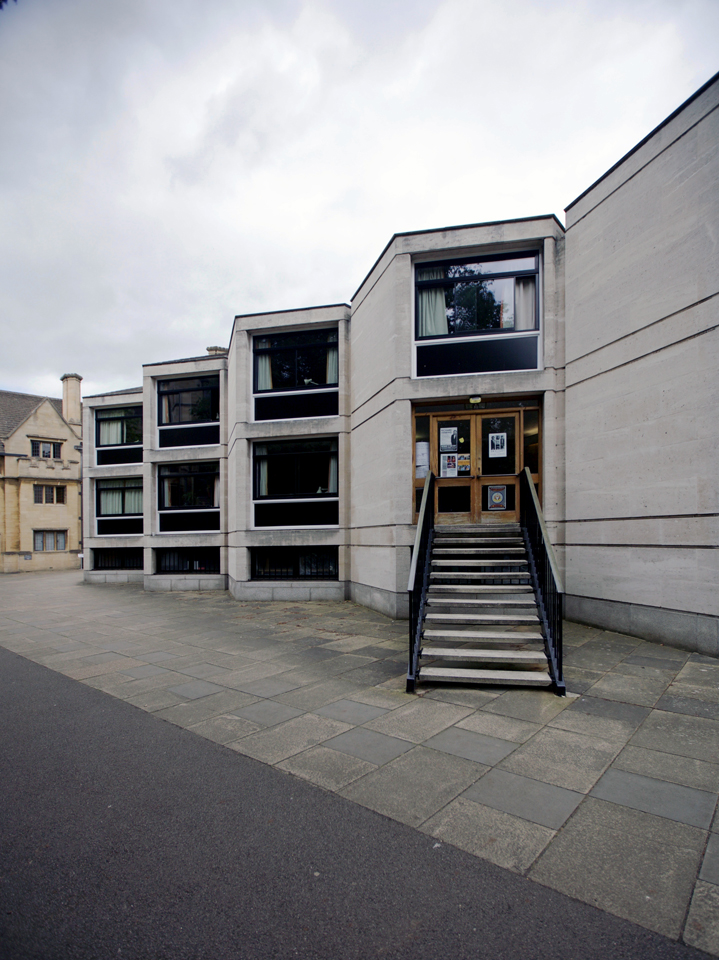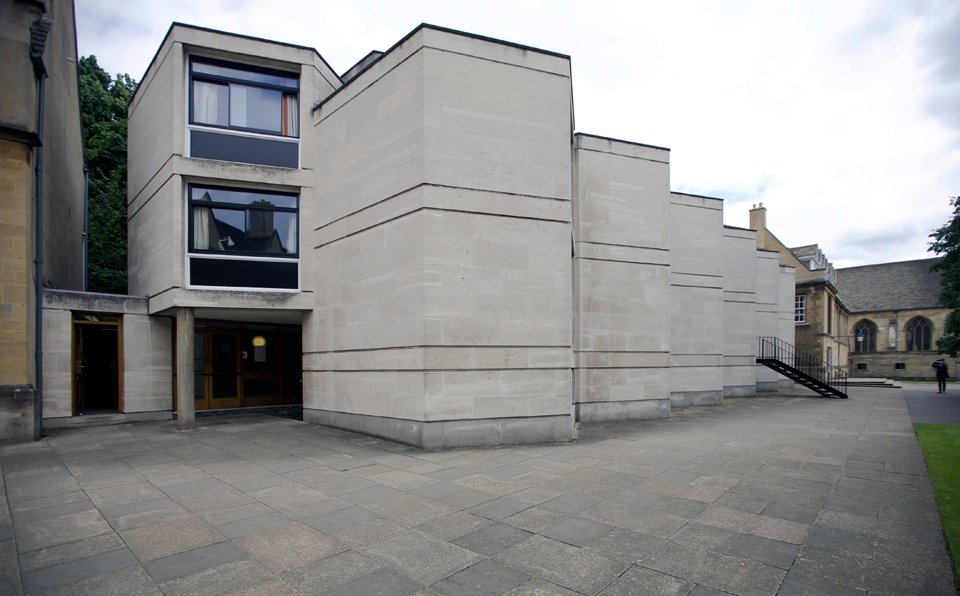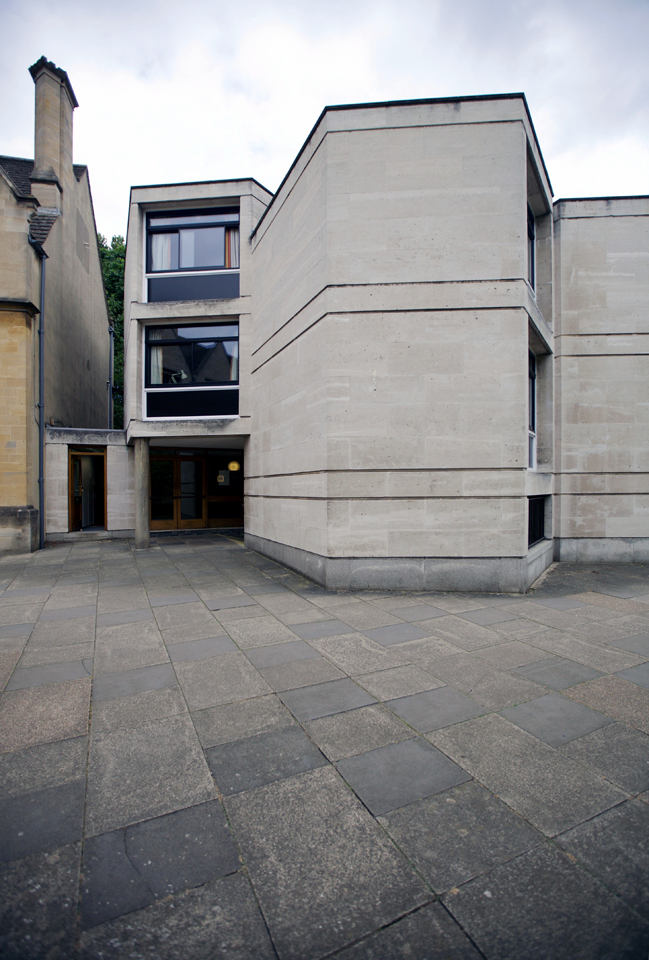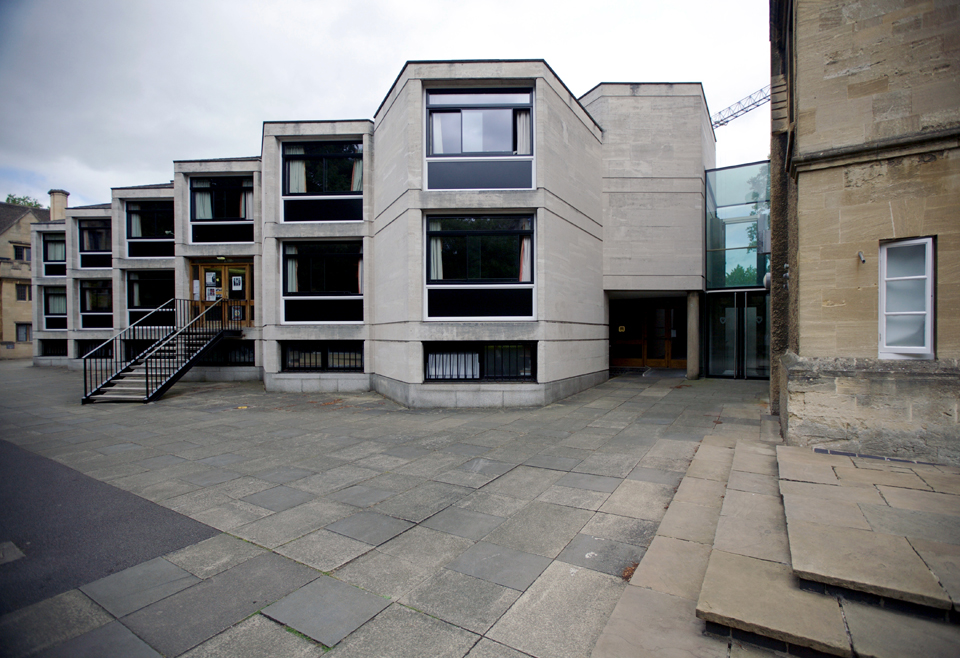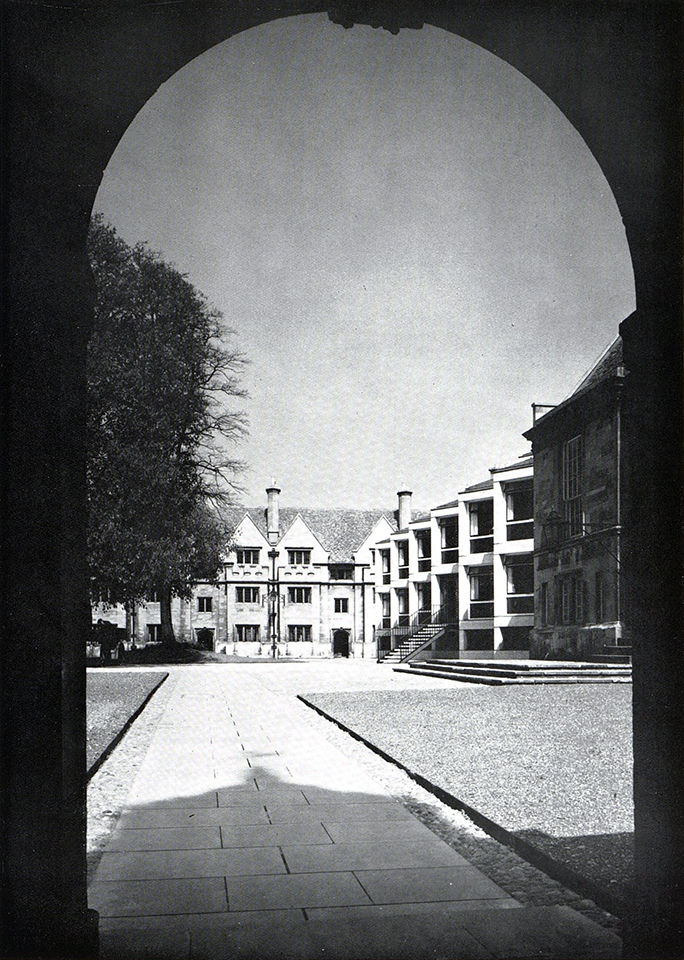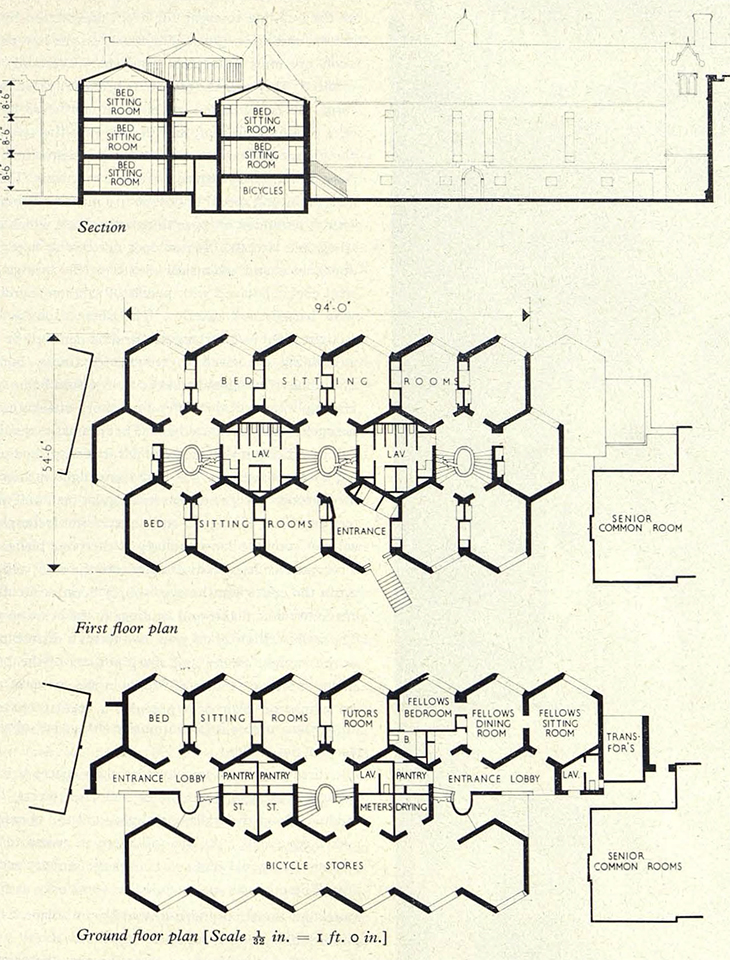The Beehives
1960
One of the earliest post-war schemes to be completed in Oxford, this small grouping of undergraduate study bedrooms was welcomed by the architectural press for its uncompromising form. [1] Oxford Co-Partnership were deliberately titled thus to evidence their collaborative and team approach to design amidst an atmosphere of socially committed modernism. Founded in 1939, the core partners being Kenneth Capon (1915–88), Anthony Cox (1915–93), and Michael Powers (1915–94). Their most renowned work was the Brynmar Rubber Factory (1952), which was controversially demolished in 2001. Sited in the President’s Garden, the striking hexagonal forms closed the quad to the North Quadrangle of St. John’s College. According to William Whyte, it ‘was a revolutionary piece of architecture when it was put up in North Quad between 1958 and 1960.’ [2] A slightly staggered section allowed for basement bicycle parking and the central service spine, also using the same hexagonal module, housed stairwells, laundry, pantries and shared bathrooms. This also enabled a broken skyline that mimicked the spires of Oxford but without recourse for ornamentation and likely informed the inclusion of finials to the roofs. The ‘dramatic and broken outline’ gave the building a different appearance from every aspect and was a marked shift from the largely complementary architectural styles of the various historical additions to the college. For what it lacks in ornament, the bold modelling of the grouping affords a certain sense of context that is not awkward in its setting. The entrance stair was, and remains, a slightly jarring intervention into the courtyard and into the otherwise purity of the geometric expression.
[1] Architects’ Journal, 17 November 1960, p.725.
[2] https://www.sjc.ox.ac.uk/discover/news/beehive/ [Accessed May 2022]
